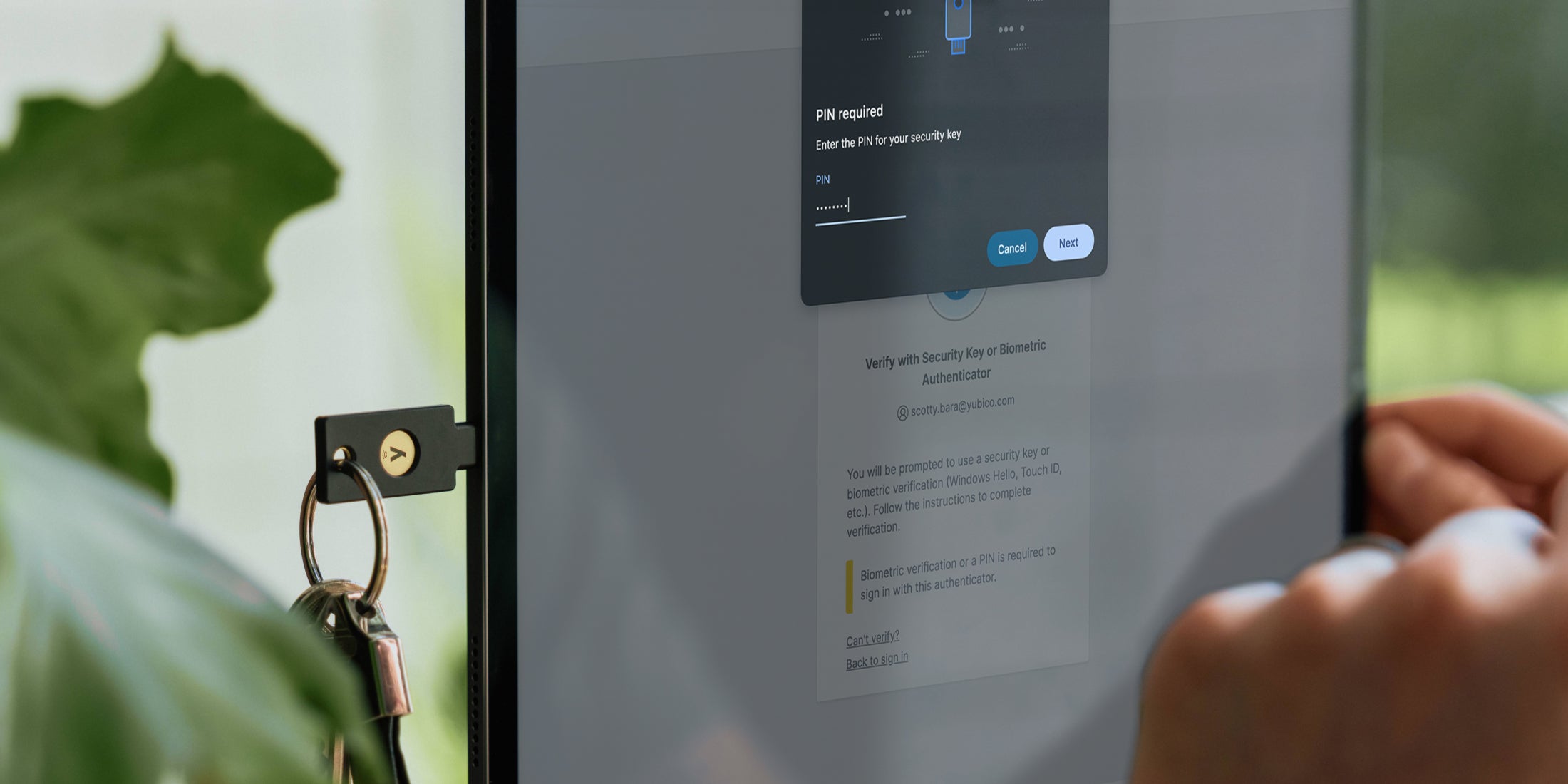We’ve all grown accustomed to a flood of ransomware attack news almost every week, with no end in sight. The recent arrest of two Ukrainian ransomware attackers demonstrates that the White House is serious about going on the offensive against ransomware distributors. But often enforcement could end up being a game of whack-a-mole — hit one attacker, three more pop up. It’s not a matter of if the next attack will come, but when.
Organizations are scrambling to make sure they have two key plans in place as countermeasures: a ransomware mitigation plan in place to prevent, detect, and contain a ransomware attack, and a ransomware incident response procedure for preparation if and when an attack happens. Yubico has worked with many customers over the years on providing strong authentication to reduce the risk of ransomware. We’d like to share a few best practices we have learned to reduce the risk and impact of ransomware.
What should your ransomware mitigation plan include?
Authentication, authentication and then some work on authentication. There’s a common misconception that prevention of ransomware attacks is only about keeping individual users from opening a window by clicking on suspicious links that download malware onto systems or computers. But in many cases weak authentication systems may allow attackers to gain entry to a system, pose as an authenticated user, and strategically place ransomware in the most damaging places.
So ensuring that you have strong multifactor authentication (MFA) systems that do not rely on basic MFA such as SMS or mobile apps is a good first step to mitigate ransomware attacks. The system can be smart-card based or use FIDO-based security keys, but the most important element is some form of modern MFA.
The best ransomware mitigation strategies rely on full audits that attempt to objectively evaluate all endpoints in a system, prioritizing those that seem more likely to be exploited. For example, VPN systems can present significant risk, especially those that haven’t been updated in a while. Famously, cyberattackers used a stale credential in Colonial Pipeline’s VPN to gain entry, and the result was a complete shutdown of a key energy system for days. Worse yet, once entry is gained, an administrator account is often set up so cyberattackers can control ransomware remotely (SolarWinds is the most high-profile example of that scenario).
A ransomware mitigation checklist includes a full and honest audit, answering some basic questions like:
- Where is the critical data in the system that is most at risk?
- Who has access?
- What controls are in place to protect it?
- How do you recover if it’s lost or encrypted?
- Are there automated systems with appropriate controls?
- Is there a system of automated reporting that alerts on flags and endpoints?
- Do you have a zero trust architecture in place? In other words, if access is given that’s not expected, is there an automated way to deny access until verification is achieved?
- How do you recover the critical data if lost?
- If you’re in the cloud, whether Microsoft, Amazon, or another provider, are controls set correctly and monitored?
Half the battle in mitigation to prevent ransomware attacks comes from knowing the right answers to those questions, and reacting appropriately to bolster defenses where protection isn’t as strong as you want it to be. The other half is prioritizing practiced and tested response plans to ensure you’re properly prepared for a cyberattack.
Here’s another upside to having a solid ransomware mitigation plan which includes modern MFA: cyber insurance companies often peg their premium levels on the level of risk mitigation efforts you make. In some cases, they may refuse to approve coverage at all until MFA technology is demonstrated. So, since premium levels are often much less for companies that properly prepare mitigation plans, it can literally pay off down the road to have a thoughtful plan prepared today.
What should a ransomware incident response plan include?
One thing we know is that attackers are constantly learning, upgrading, and changing tactics. Some automated systems and reporting tools will be helpful in countering that, but most of those systems are designed to prevent and detect ransomware attack vectors that have been seen before. What about the ones we haven’t seen yet? That’s where your ransomware incident response plan (IRP) comes into play.
A ransomware incident response procedure has to be in place well before any attack and be updated and tested regularly. It also should be detailed enough so that key decisions do not need to be made on the fly. The difference between a well-planned IRP and “winging it” on the day you get attacked could be the difference between a major disaster and an operational hiccup.
Make sure your ransomware incident response playbook includes some of these best practices:
- Senior leadership (preferably at the VP or higher level) should be engaged and directly responsible for the plan.
- Experienced security and operational employees are given the authority to build a viable and actionable plan.
- The plan needs to be aligned and integrated with business continuity and disaster recovery plans and teams. One caveat: disaster recovery is often designed for the 10-year event, but the IRP has to be designed for an event that’s to be expected every single day.
- Incentivize delivery and maintenance for the plan through performance bonuses and clear employee evaluation goals and objectives.
The X-factors to prevent ransomware attacks: people and company culture
Finally, it may not be enough even if you have the perfect ransomware mitigation plan and IRP. You also need a culture that’s open to change, even change that might disrupt what people are used to doing to fully prepare and prevent ransomware attacks.
As an organization, the last thing you want is to foster a low security environment. IT and business leaders should be in close contact within the company so that employees are educated on best practices and on the same page when it comes to cyberattack defenses. That communication will foster an environment where, once a vulnerability is identified or a best practice needs to be implemented, the fix that it requires will be green-lighted easily. Yes, even if it means suffering through some downtime or limiting partners’ access though the VPN for a while! When business leaders recognize that security is a priority that may justify some compromise, changes can be made efficiently and in time to prevent the next ransomware attack.





